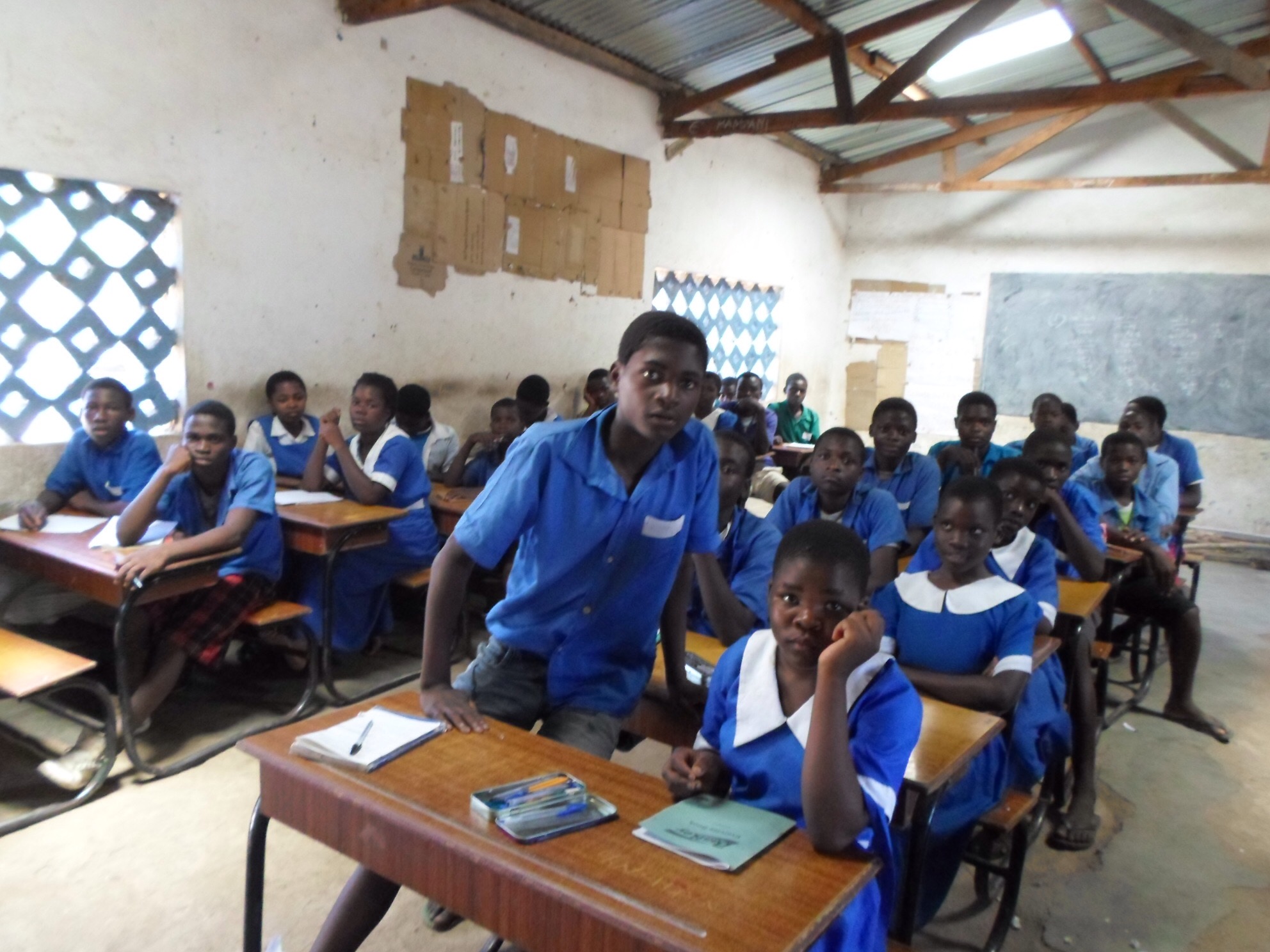There are so many things that we take for granted. When we greet somebody we may not realise the impact such a simple act may have on the person. Basic as it may seem, greeting someone says a lot to the person. The person feels valued and important. On the other hand, not greeting someone sends a very negative message to the person. It is like saying to the person “You do not exist”. Why Wait teaches learners to appreciate such basic acts bearing in mind that “Nobody is a nobody”. In this lesson, learners were practising this basic but very important act of greeting each other.
Author: FLAEM
Supervisory visits to the schools
During supervisory visits to the schools, FLAEM Executive Director, Lloyd Khanyanga, observes lessons. Apart from verifying that teachers really present the lessons they claim to have presented through the monitoring forms that they complete for every lesson, he also takes on what the teachers do e.g. the presentation style, content and many other things.
At the end of each lesson he discusses with the concerned teacher. This is aimed at encouraging the teachers on the things they do well and assisting the teachers to improve on any noted weaknesses. Teachers appreciate this. In this photo Lloyd is taking notes during a lesson.
Expressive arts-part of Why Wait lessons
Expressive arts are part of the WHY WAIT lessons. This ensures that every learner has the opportunity to participate in the lessons and develop their God-given talents. The lessons are conducted in a relaxed manner.
The girl standing up is holding a clay modelled “man” and is explaining to her friend her understanding of how God made man. The lesson also demonstrates how man is different from other creatures. For other creatures God simply commanded that they be there but for man God made him and in His own image.
Health and hygiene
Why Wait lessons also tackle health and hygiene issues in a verypractical way. learners are assisted to discover the causes of problems and suggest solutions. in this way the learners “police” their actions even in the absence of the teacher. The two photos below show a class activity and the learners.
No learners’ books
Learners listening to a story read by the teacher from a Why Wait Teachers Manual. The learners have to listen and answer questions.

Currently, there are no learners’ books. Our intention is to provide learners with “Take home materials” on A4 paper. This will contain verses and key messages from the lessons.
Please consider supporting us financially so that we are able to do this for the over 17,000 learners that participate in the Why Wait programme.
The effectiveness of monitoring forms
During a discussion on the effectiveness of monitoring forms for Why Wait with head teachers of Chambe zone, Mr. Alfonso, head teacher of Samson primary School, said that the monitoring forms have enabled him to see certain things that he never saw before the use of the forms. One of the things he mentioned is that through the forms he is able to determine the seriousness of his teachers. This is so because the teachers have to comment on each lesson. “The comment that each teacher writes down, tells me how serious they are in their work, not just Why Wait”, concluded Alfonso.
This is a very big encouragement. Why Wait is indeed contributing towards the improvement of delivery of lessons for a better teaching and learning environment.
Mr. Alfonso seated far left in white shirt:
The Lord’s prayer

Learners at one of the participating schools copying the Lord’s prayer so that they can memorize it. Memorizing some things is one of the important aspects of Why Wait. The Lord’s prayer is critical in character building.
Recent visit to Kambenje primary school
During my recent visit to Kambenje primary school, I decided to check if the learners remembered what they learned in Why Wait during the last academic year. I took standard (grade) seven by surprise by asking them questions from the work they did in standard six. I was very surprised to see how much the learners retained.

Why Wait lessons are an important part of what the learners cover in their studies. As leader of the work, I am very happy and motivated to go an extra mile.

We are still looking for funds to enable us run a quiz competition. From what I saw at Kambenje, the quiz competition will be worth running. Please consider supporting this competition.
No adequate classrooms
Most of the schools where FLAEM is running the Why Wait Programme have very big numbers of learners. Nogwe Primary schools is one of such schools. In this photo, standard five learners pose for a photo with their head who teaches Why Wait in the class. All these learners are crowded in one classroom because the school does not have adequate classrooms.

This school is one of the schools that is difficult to reach because of the road condition. During the rainy season the school is completely cut off. It is schools like this that FLAEM takes the challenge to reach out to.
By assisting FLAEM financially, you are reaching out to these wonderful boys and girls who are neglected.






